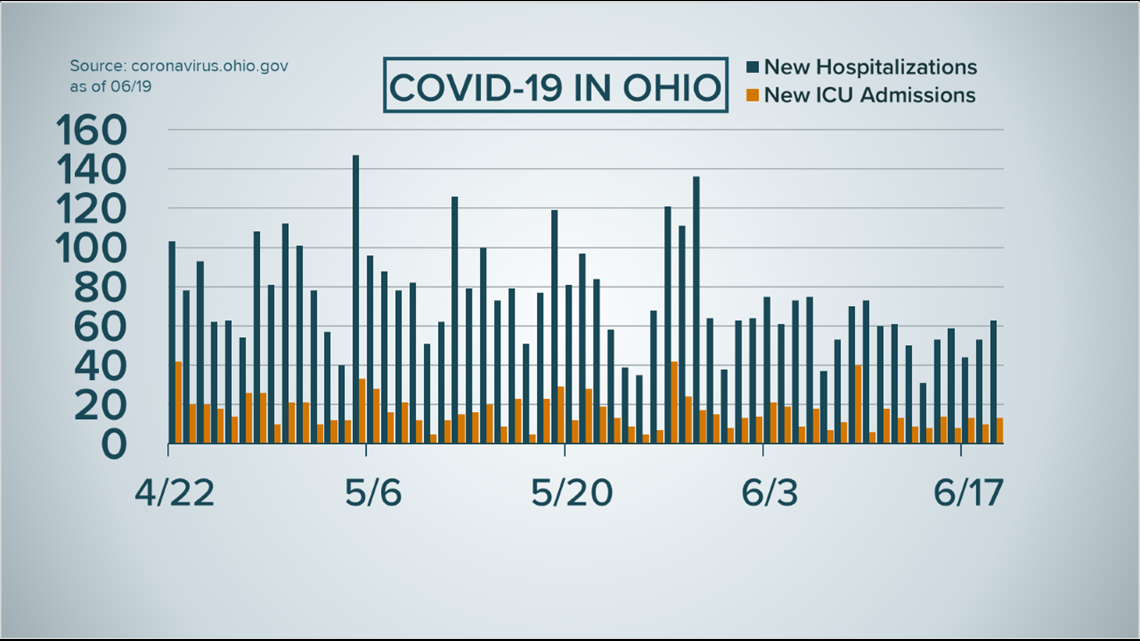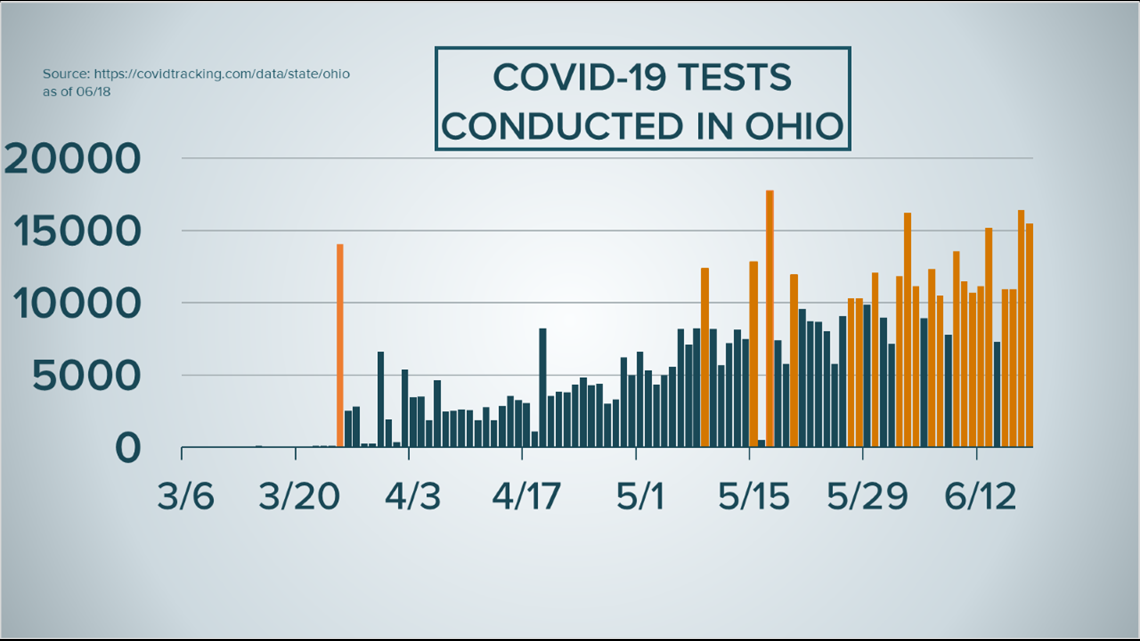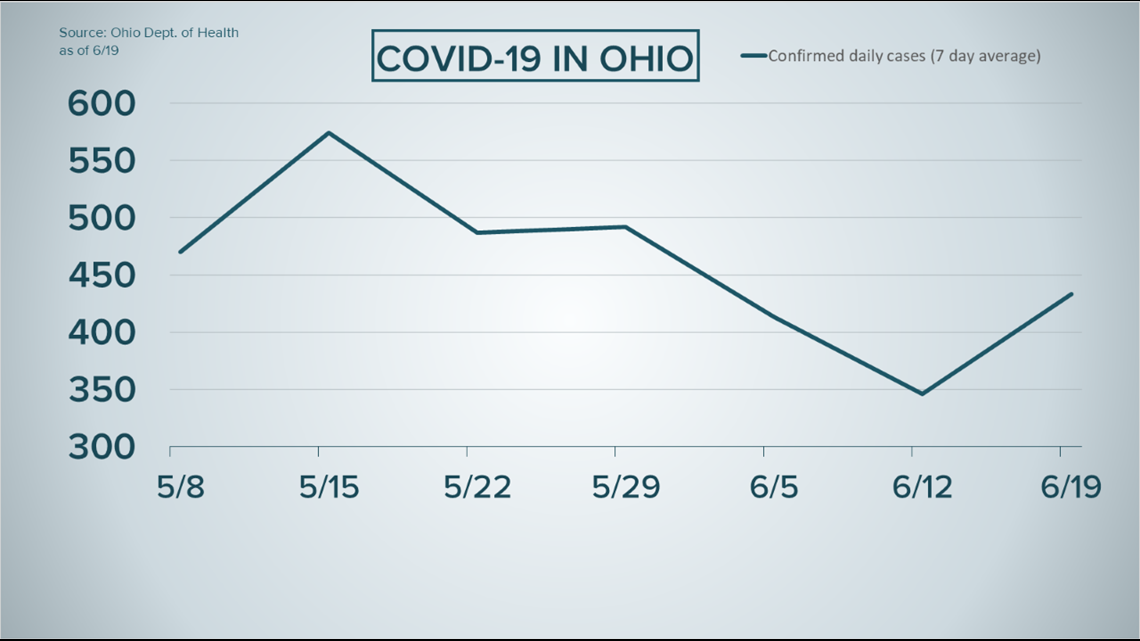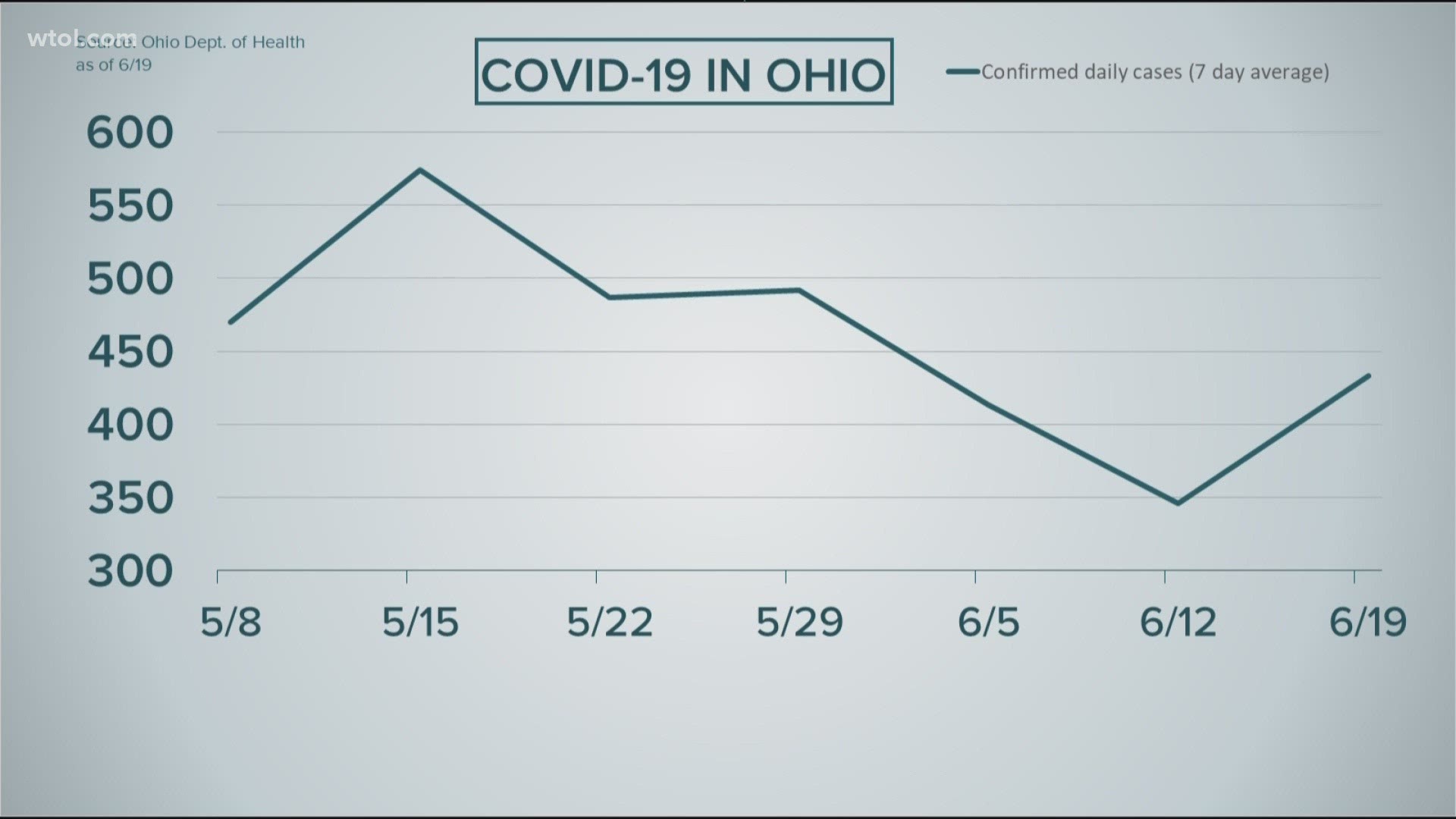TOLEDO, Ohio — This week, COVID-19 cases in the state of Ohio have gone up roughly 24%. When paired with news out of Texas, Florida, and Arizona of surging cases, it's understandable that some people are alarmed.
But, there are significant differences between Ohio and those states. While cases are jumping in Ohio, the other metrics in the state are flat or even declining.
For the past seven days, new hospitalizations have been 50. Last week, that number was 61. New ICU patients have averaged 11, compared to 16 last week. The current hospitalizations are 525, current ICU admissions are at 200 and ventilator use is at 133. All of those numbers, which most experts would agree are the most important numbers, are at two-month lows.


California is in the same situation; cases are up more than 20%, but the other numbers are stagnant. Compare that to Arizona, where cases have jumped and hospitalizations have nearly doubled in the past two weeks.
Looking at the positivity number gives an even deeper understanding at where the two states are at in their pandemic stories. The positivity number is the percentage of people who are tested that come back positive. The World Health Organization wants the number below 5%. In Ohio, the number is 3.7%. In Arizona, it is more than 14% - and rising. That means that the virus is widespread in the community and spreading rapidly. Ohio is not seeing that at this point.
So the question is: what is causing the rise in Ohio cases?
The obvious answer is that the state is testing more people than ever. On at least two days this week, more than 15,000 people were tested on those days. When more people are tested, more positive cases will be found.


The less obvious answer is that more young people are testing positive. There is clear evidence that young people, even children, are being infected at greater rates than earlier in the pandemic. Young adults and young families have been interacting more with others, and those infections coincide with the state reopening all aspects of its economy.
Young people are more mobile and less likely to take precautions. Drive by many bars and you can find pictures of people crowding together and not wearing masks.
The median age of the infected in Ohio has dropped from the 50s into the 40s recently. It has been even more dramatic in Florida, which announced close to 4,000 new cases on Friday. In Florida, the average age of infection is now about 39.
Few young people are seriously affected by the virus. Only 62 Ohioans younger than 50 have died. So young people are being infected, driving up the case numbers, but they are not necessarily being hospitalized or dying.
Add on top of that the fact that medical professionals are learning more about the virus. It was a completely foreign virus when it was affecting people in March. But, doctors are having more success in treating it three months later, so death numbers are a fraction of what they were in April and May while other numbers begin to climb.
Ohio's numbers show that there is no cause for alarm, but that COVID-19 is unlikely to disappear soon.



